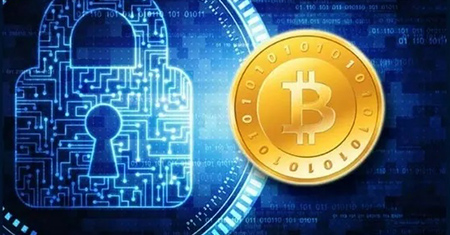Secure your Cryptocurrency
Secure your Cryptocurrency
Securekal
24-Aug-2021Tring, Tring – Hello, My Cryptocurrency has vanished from my Wallet.
Yes, you got it right. A person lost all his/her hard earned money stored in cryptocurrency and called up to find out what can be done next?
But it was too late, as the damage was already being done and currently the road to recovery of such stolen asset is very long and grueling with very bleak chances of success.
This is where the famous quote which is learned by every literate person on this planet, but only less than quarter of them apply in their day to day daily life – “PREVENTION IS BETTER THAN CURE” come handy.
But before understanding the PREVENTION (Security) methods related to Cryptocurrency, let’s first understand the basics of CRYPTOCURRENCY.
CRYPTOCURRENCY?
CRYPTOCURRENCY is a DIGITAL or VIRTUAL CURRENCY, based on Blockchain Technology and secured by using digital CRYPTOGRAPHY methods. Cryptocurrency is basically binary data system designed to work as a medium of exchange wherein individual coin/currency ownership records are stored in a ledger existing in a form of a computerized database using strong cryptography methods to secure transaction records, to control the creation of additional coins, and to verify the transfer of coin ownership. Hence the name CRYPTOCURRENCY. Although the CRYPTOCURRENCY by design is supposed to be SECURE, but it has lot of external players like Exchange – A medium or place to buy or sell the Cryptocurrency, Wallets – A place to store the Cryptocurrency Application Platform – A Web/Mobile Application or set of applications to access the Exchange, conduct Trading Transactions in Cryptocurrency and storing the Cryptocurrency in the Wallets. All these external players are mandated to provide a secure environment for the end users to conduct the transactions using cryptocurrency in a secure and safe manner.
SECURITY MEASURES FOR CRYPTOCURRENCY
But “SECURITY cannot be 100%”, there are always few loopholes or risks which makes them vulnerable. Hence the end users are advised to follow certain Prevention Methods to safeguard and secure their cryptocurrency and minimize the loss.
1. KYC – E ( Know Your Cryptocurrency Exchange)
Similarly to globally followed practice of Know Your Customer (KYC) by any business, every cryptocurrency investor needs to carry out a thorough research on the cryptocurrency exchanges – it’s working and security practices, it’s performance, it’s past history in dealing with cyberattacks and data breaches if any, study the reviews, speak to more experienced investors, etc. before narrowing down to a particular Cryptocurrency exchange.
2. KYS – W or E (Know Your Storage – Wallet or Exchange)
Once you have purchased the cryptocurrency, it’s necessary for you to store it. Now comes your next task – Knowing your Storage whether it’s on Wallet or on Exchange – one needs to know the advantages of both the options. Ideally it’s advisable to store your cryptocurrency in a wallet, but still you can explore the option of storing it on Exchange. Now there are “N” number and type of wallets available in the market, but you need to evaluate the advantages, its security features, past performance, technological advancement, etc. before finalizing on the wallet.
3. KYW – O or P (Know Your Wallet – Digital or Physical)
There are different types of Wallets – Digital and Physical. It’s advisable to store majority of your cryptocurrency pounds and dollars on your Physical Wallet (Special USB Hardware Stick) and leave few pennies on the digital wallet to pay off certain usage charges. You can keep the Physical Wallet under lock and key or digital lock. Hence adopting a hybrid strategy of using the Physical and Digital Wallet is quite a good option to secure your cryptocurrency.
4. KYP – S and M (Keep Your Password – Strong and use Multi-Factor)
There are quite a number of passwords one has to deal with – password for exchange accounts, wallets – physical and digital accounts and other services. All these passwords acts as keys to the private and public cryptography and hence it’s advisable to use separate passwords for both public and private keys, exchanges and wallets – physical and digital. Other Good Practices for Password Security like “Complex and Strong Password”, “Changing the Password after certain period”, and “Use Multi-Factor or Two-Factor Authentication” are also advisable to follow.
5. KTY – S (Keep to Yourself – Securely)
Passwords and keys – public and private are critical security features of cryptocurrency. Hence it’s advisable to keep the same to yourself especially the private key and critical passwords. Here erasing out digital traces works fine here – (i.e. Printing out the password / private key, keeping it under lock and key and finally deleting the linked emails and digital files) is the safest technique to secure the password and private key.
6. KYS – E (Know Your Security – Environment)
Apart from knowing about the Exchanges and Wallets Security and adopting its secure methods, it’s quite mandatory to know and understand the security features and measures of Applications – Web/Mobile, End User PC/Laptop and Mobile from which the Trading is carried out, physical environment from where the trading is carried out, etc. Hence it is quite critical for you as an end user to ensure that preventive security measures are adopted to secure the environment – YOUR PC/LAPTOP/MOBILE AND PHYSICAL PLACE from where the cryptocurrency trade or transactions are carried out.
Conclusion
Adopting and Following the Secure Methods while conducting Trading or Transactions relating to Cryptocurrency and as well during non-trading hours is the key to ensure the Safety and Security of your HARD EARNED MONEY.
TAKE CARE AND STAY SAFE – PHYSICALLY AND DIGITALL
